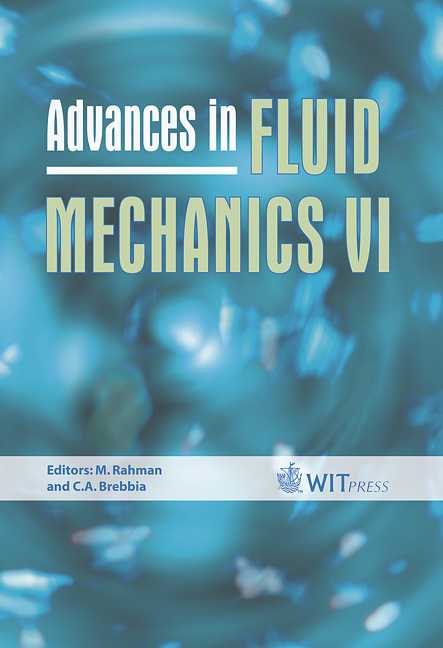Stratified Flow Over Topography: Wave Generation And Boundary Layer Separation
Price
Free (open access)
Transaction
Volume
52
Pages
10
Published
2006
Size
1,330 kb
Paper DOI
10.2495/AFM060321
Copyright
WIT Press
Author(s)
B. R. Sutherland & D. A. Aguilar
Abstract
We have performed laboratory experiments to study wave generation over and in the lee of model topography. We have chosen to use periodic, finite-amplitude hills which are representative of the Earth’s major mountain ranges as well as the repetitious topographic features of the ocean floor. The topographic shapes are selected to encompass varying degrees of roughness, from smoothly-varying sinusoidal hills to sharper triangular and rectangular hills. Contrary to linear theory predictions, the (vertical displacement) amplitude of the internal waves directly over the hills is generally much smaller than the hill height. This is because fluid is trapped in the valleys between the hills effectively reducing the amplitude of the hills. Thus the experiments serve to emphasize the importance of boundary layer separation upon internal waves generated by flow over rough topography. 1 Introduction Internal waves propagate through fluids whose density, effectively, decreases continuously with height. Like surface waves, fluid parcels associated with internal waves move up and down due to buoyancy. However, the motion is not confined to an interface and so it is possible for internal waves to move vertically as well as horizontally through the fluid. The strongest source of internal waves in the atmosphere results when stratified air flows over mountain ranges. For hills that are periodic and sufficiently small amplitude, linear theory predicts that waves are generated in the overlying air with the same period as the time for flow from one hill crest to the next. The waves propagate vertically away from the hills provided this period is longer than the
Keywords





